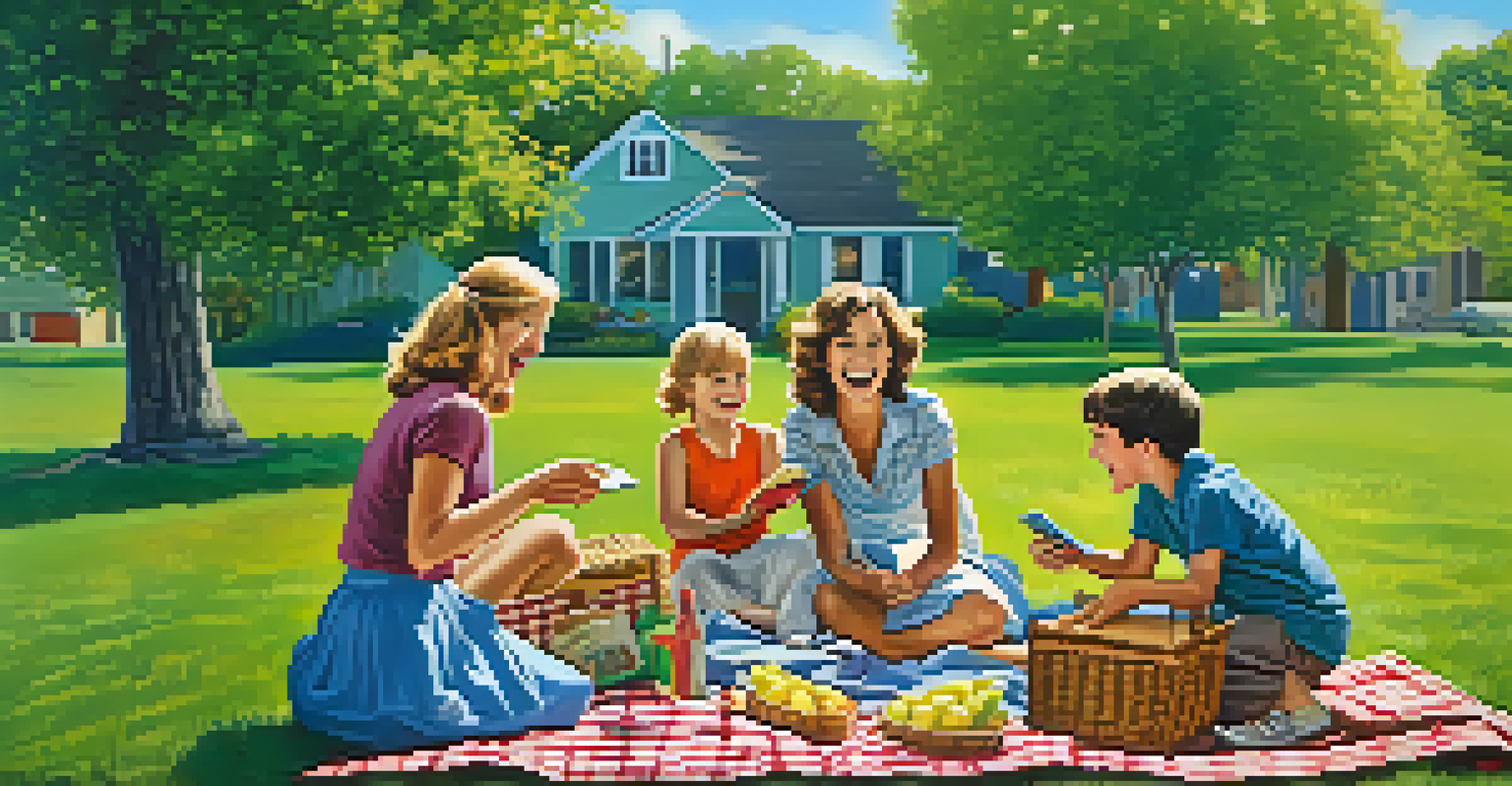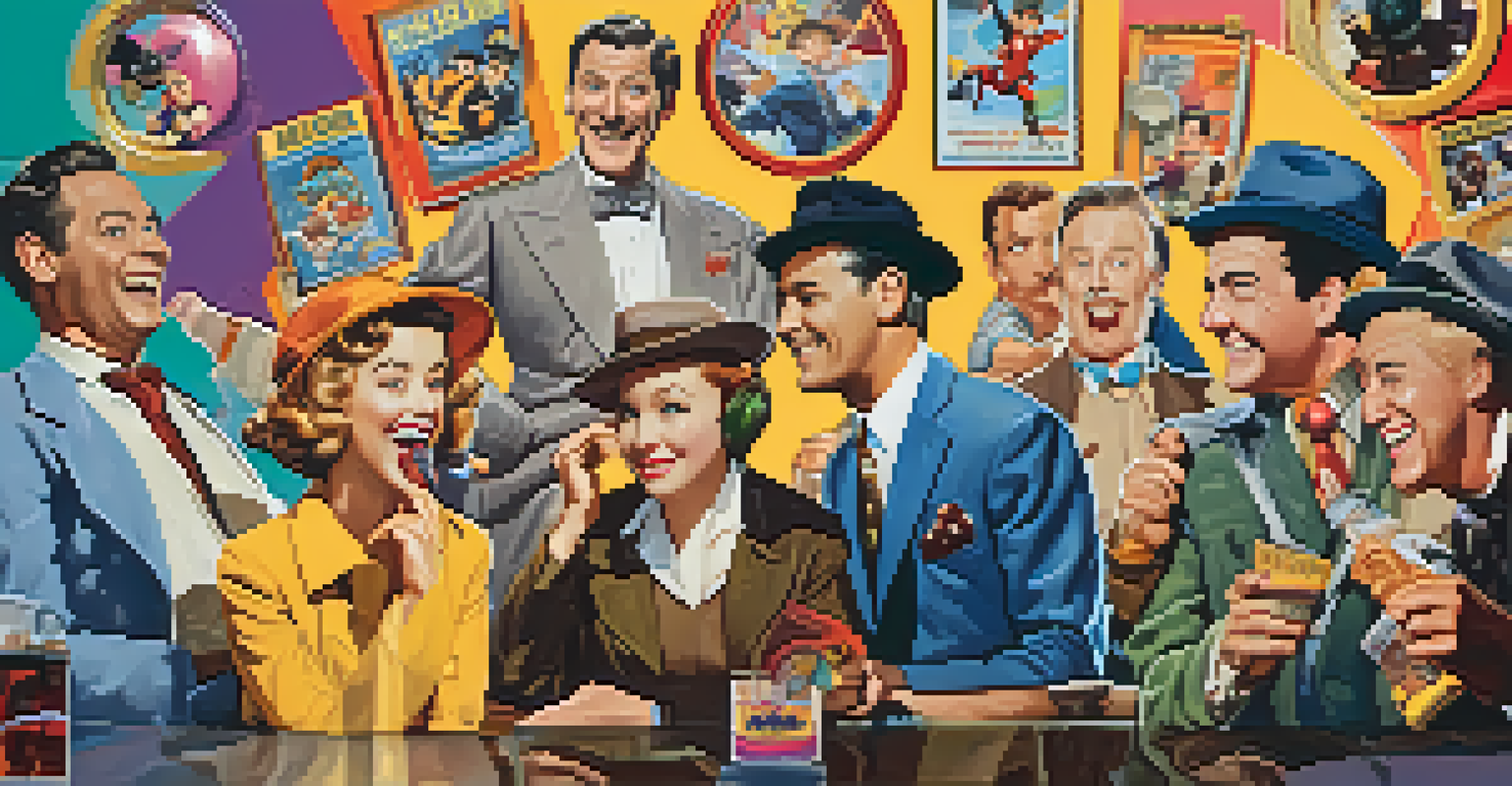Comedy Classics: Timeless Humor and Modern Audience Appeal

The Enduring Appeal of Classic Comedies
Classic comedies have a unique charm that transcends generations. They tap into universal themes like love, friendship, and the absurdities of life, making them relatable to audiences of all ages. Think about iconic films like 'Some Like It Hot' or 'The Odd Couple'—the humor is often simple yet profound, allowing viewers to connect with the characters and their situations.
Comedy is simply a funny way of being serious.
Moreover, the physical comedy and witty dialogues in these films often require little context to be appreciated. For instance, Charlie Chaplin's silent films still elicit laughter today, showcasing how visual gags can resonate across time. This timelessness is what keeps these classics alive and well in modern culture.
As we dive into the world of comedy, it's essential to recognize how these classics not only entertain but also provide a lens through which we can examine societal norms. By laughing at the follies of the past, we gain insights that are surprisingly relevant today.
Cultural Context: Understanding the Classics
To fully appreciate classic comedies, it's crucial to understand the cultural context in which they were created. Many classic films reflect the social attitudes and challenges of their time, offering a snapshot of history. For example, the humor in 'Dr. Strangelove' critiques Cold War anxieties, making it both a hilarious and thought-provoking watch.

While some jokes may not land as well with today's audiences due to evolving social norms, the core themes often remain relevant. This can lead to a fascinating discussion on how humor evolves, and how we can re-contextualize these narratives for modern viewers. It's like rediscovering a treasure; the laughter is still there, but the interpretation might change.
Timeless Themes Connect Generations
Classic comedies explore universal themes like love and friendship, making them relatable to audiences of all ages.
By examining these cultural nuances, audiences can engage with classic comedies on a deeper level. It’s not just about getting a laugh; it’s about understanding the 'why' behind the humor.
Iconic Characters: Timeless Archetypes
One of the hallmarks of classic comedies is their unforgettable characters. Characters like the bumbling detective, the quirky sidekick, or the misunderstood anti-hero have become archetypes that audiences recognize and love. These roles resonate because they often embody traits we see in ourselves or those around us.
Laughter is timeless, imagination has no age, and dreams are forever.
Take, for instance, the character of Ferris Bueller in 'Ferris Bueller's Day Off.' His carefree attitude and knack for bending the rules make him an enduring icon. Even years later, young audiences still root for him, proving that these characters have a unique ability to connect with viewers across different ages and eras.
Moreover, the performances of actors in these roles often elevate the material. The chemistry between characters can lead to some of the most memorable moments in film history, ensuring that the laughter continues to echo through time.
The Art of Timing: Comedic Pacing in Classics
Comedic timing is an essential element that can make or break a joke, and classic comedies excel in this regard. Directors and actors often worked meticulously to ensure that every punchline landed perfectly. This kind of precision is evident in films like 'Airplane!' where rapid-fire gags keep audiences laughing from start to finish.
It's fascinating to observe how pacing affects humor. The slow build-up of a joke followed by a sudden twist can create a delightful surprise, leading to an uproar of laughter. Classic comedies mastered this technique, making it an integral part of their appeal.
Cultural Context Enhances Understanding
Understanding the cultural background of classic comedies reveals the societal norms and issues they humorously critique.
In today's era of fast-paced entertainment, revisiting these classics can remind us of the beauty of a well-timed joke. It encourages modern filmmakers to appreciate and implement these timeless techniques in their work.
Modern Adaptations: Reviving Classic Humor
As we move forward, many classic comedies have found new life through modern adaptations. Films like '21 Jump Street' or 'Ghostbusters' reimagine beloved stories while introducing them to a new generation. These adaptations often blend nostalgia with contemporary humor, creating a unique viewing experience.
However, this revival comes with its challenges. Striking the right balance between honoring the original and appealing to modern sensibilities can be tricky. Audiences are quick to critique when a beloved classic doesn't translate well, making it essential for creators to be thoughtful in their approach.
Ultimately, these adaptations serve as a bridge connecting past and present, showing that humor can evolve while still respecting its roots. It’s a testament to the timelessness of comedy and the importance of keeping these stories alive.
The Role of Satire in Classic Comedies
Satire has always been a powerful tool in comedy, and classic films often used it to comment on societal issues. Movies like 'The Graduate' and 'Blazing Saddles' cleverly expose the absurdities of their respective societies, all while making us laugh. This dual purpose of entertainment and critique is a hallmark of the genre.
By using humor as a lens, these films encourage audiences to reflect on critical issues without feeling overwhelmed. It’s like sneaking vegetables into a delicious smoothie—viewers enjoy the humor while gaining valuable insights about the world around them.
Iconic Characters Resonate Deeply
Unforgettable characters in classic comedies embody relatable traits, allowing viewers to connect with them across different eras.
In today’s landscape, where satire remains relevant, revisiting the classics can inspire modern creators. It highlights how humor can be an effective tool for social commentary, proving that laughter can indeed be a vehicle for change.
Laughter as a Universal Language: Bridging Generations
One of the most beautiful aspects of comedy is its ability to bridge gaps between generations. Classic comedies can spark laughter in grandparents, parents, and children alike, creating shared experiences and conversations. This universality is what makes classic comedies truly timeless.
When families gather to watch films like 'Monty Python and the Holy Grail,' they not only enjoy the humor but also connect over shared memories and laughter. It becomes a bonding experience that transcends age, reminding us of the simple joy of a good laugh.

As we continue to share these films with new generations, we pass on not just the humor but also the lessons and values embedded within them. Laughter, after all, is one of the simplest yet most profound ways we can connect with one another.